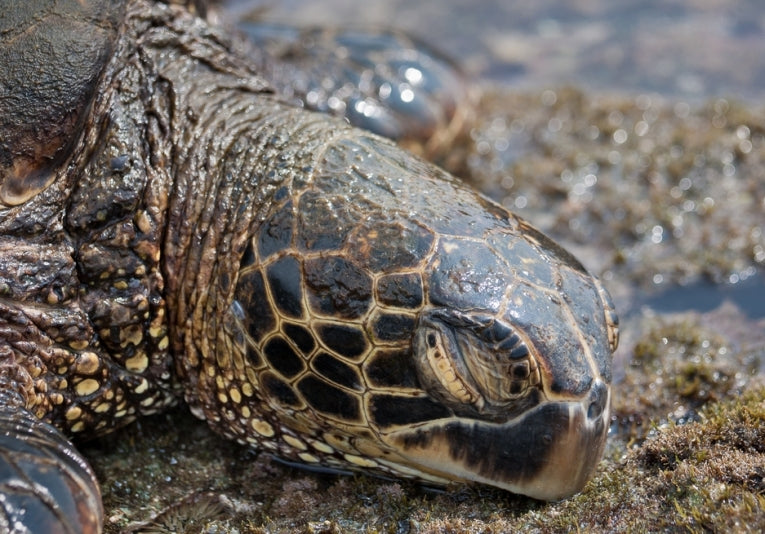At one point in time the temperate oceans of the Caribbean were filled with billions of sea turtles. During Christopher Columbus 4th voyage in 1503, he came across two small islands and the surrounding ocean was full of sea turtles that looked like little rocks.
He thought he could walk across the water on the backs of the sea turtles. Columbus named the islands Tortugas or "Turtle Islands." They became the Cayman Islands, home to the world’s largest green turtle population.
After European settlement in the Caribbean, the turtle population depleted, due to intense trade for their meat and for their decorative shells. The British colonists' desire for turtle meat was so great that the Cayman Islands became a killing field for nesting females.
The long history of dependence on turtles remains part of the Cayman culture; turtle stew remains an important native dish. To sustain the need for turtle meat in the Cayman Islands and beyond, a breeding farm opened its doors. The Cayman Turtle Farm operated for over 20 years with the controversial mission of breeding turtles for human consumption. Fortunately the Conversation International Trade for Endangered Species (CITES) ended the trade of sea turtles and associated products from the island. However, Caymanians still demanded turtle meat, so the farm turned to tourism to keep its doors open. Every year over a half a million tourists observe, swim, and interact with these sea turtles, without realizing that many of these sea turtles will be killed and eaten by humans. Misinformed tourists think the farm supports sea turtle conservation by breeding and releasing captive turtles into the wild.
"The Cayman Farm has a long history of working to ease international regulations that would allow them to market and sell turtle meat and shell produced at the Farm," says David Godfrey, Executive Director of the Sea Turtle Conservancy (STC). "Green turtles have been given a chance at recovery precisely because the Sea Turtle Conservancy has eliminated the international demand for their products."
The World Society for the Protection of Animals (WPCA) recently received complaints from Cayman Farm tourists regarding filthy, overcrowded conditions, and sick and injured sea turtles. A year-long investigation detailed these conditions:
WPCA declared the Cayman Farms detrimental to human and to animal welfare. WPCA and STC state captive turtle release into the wild can introduce new diseases into the wild Caribbean population. The wild turtle offspring and Cayman Farm turtles may lack the ability to navigate to critical foraging, breeding, and nesting sites.
WPCA strongly urges the Cayman Turtle farm to end commercial sea turtle production by replacing it with a research and education facility for injured and ill sea turtles.
The Cayman Farm rejected their plan.
"Unless someone like you cares a whole awful lot, nothing is going to get better," says The Lorax. "It's not."
You can take action at www.stopseaturtlefarm.org.










